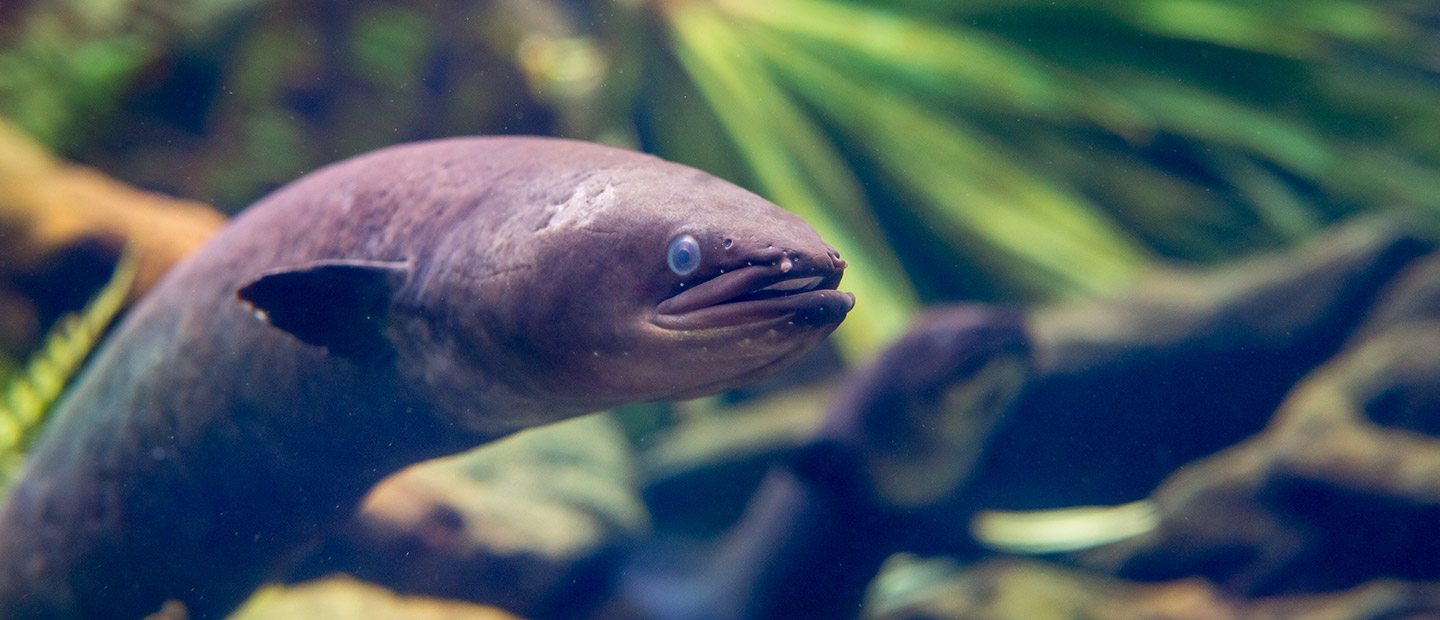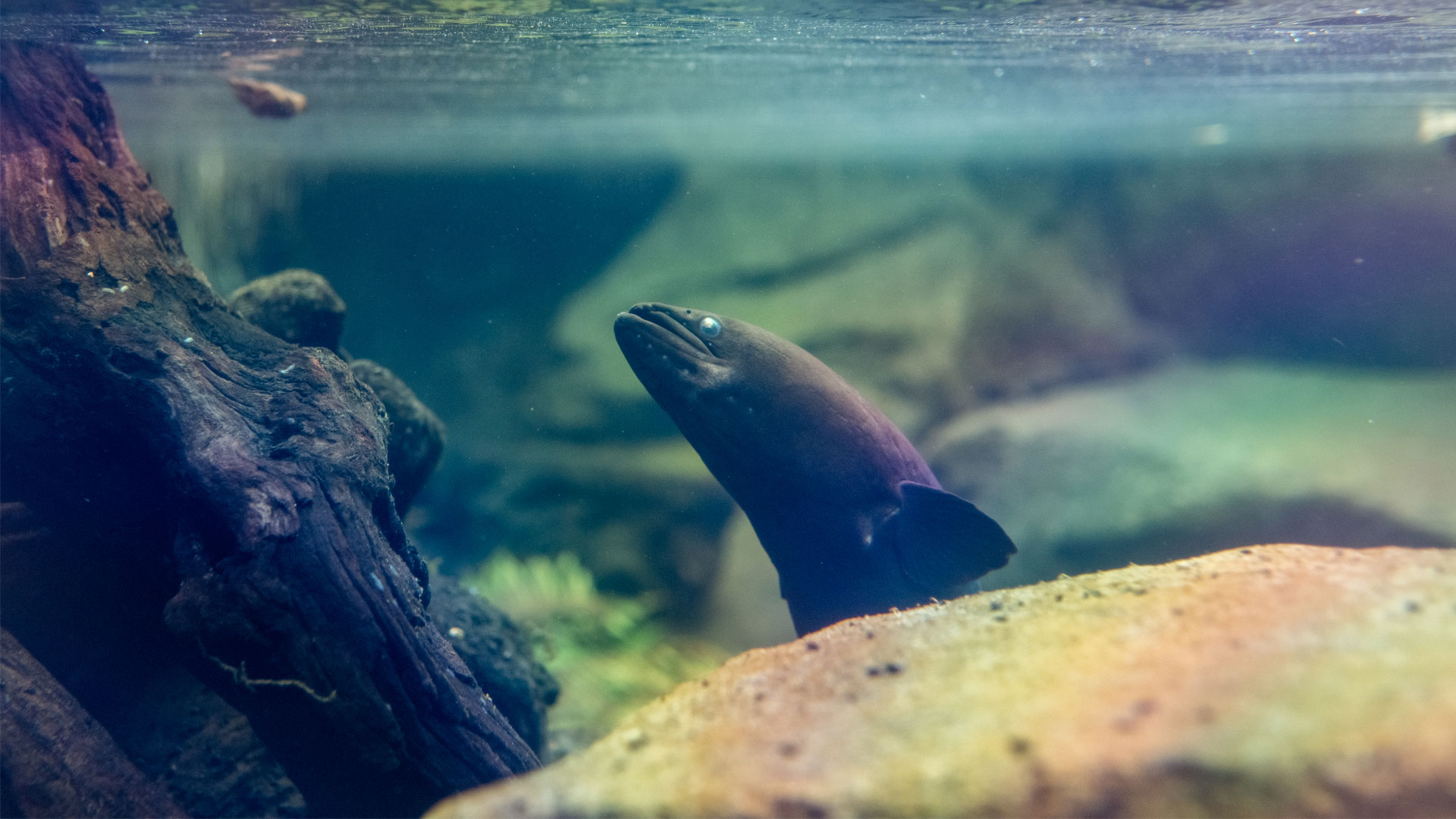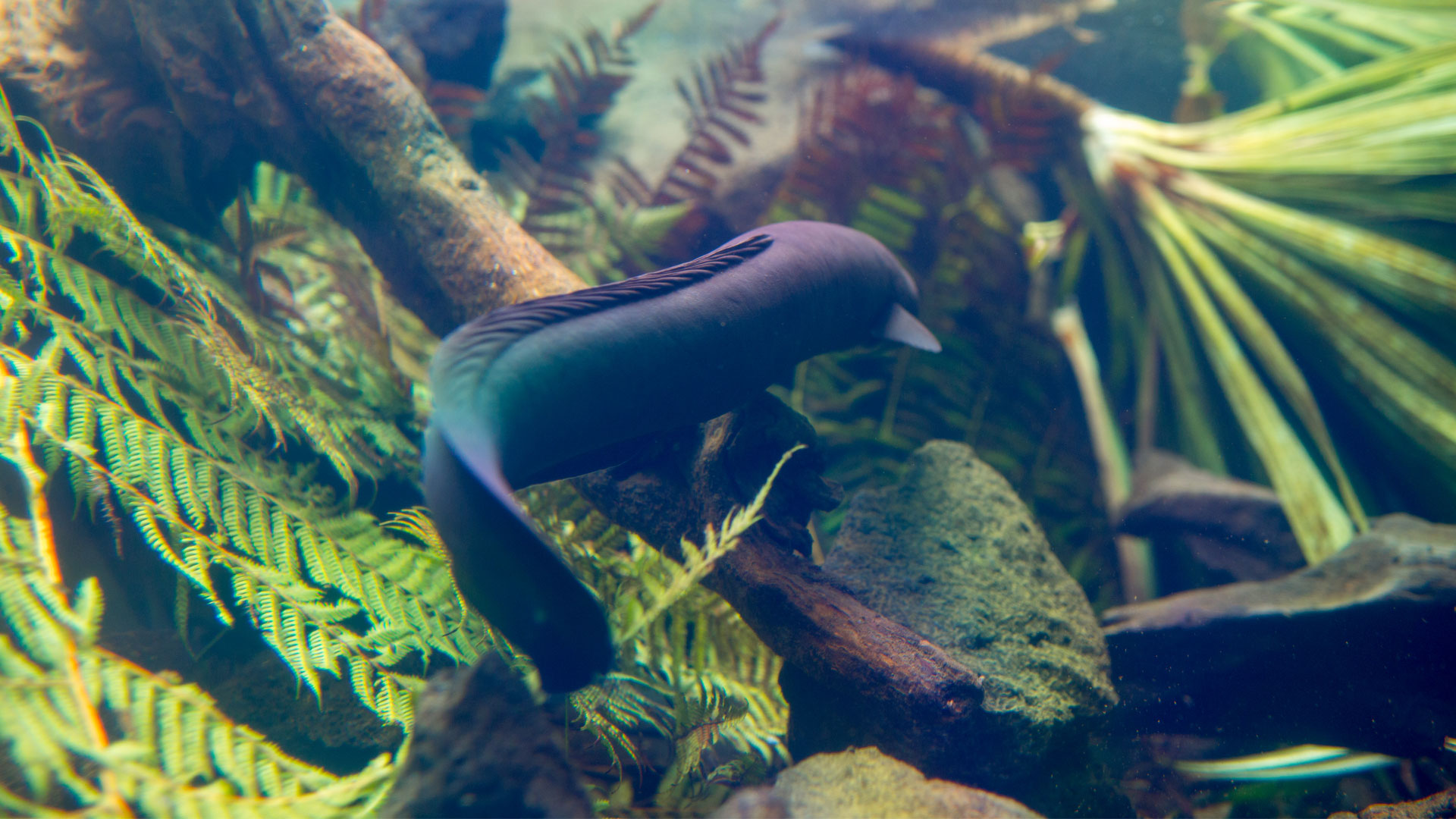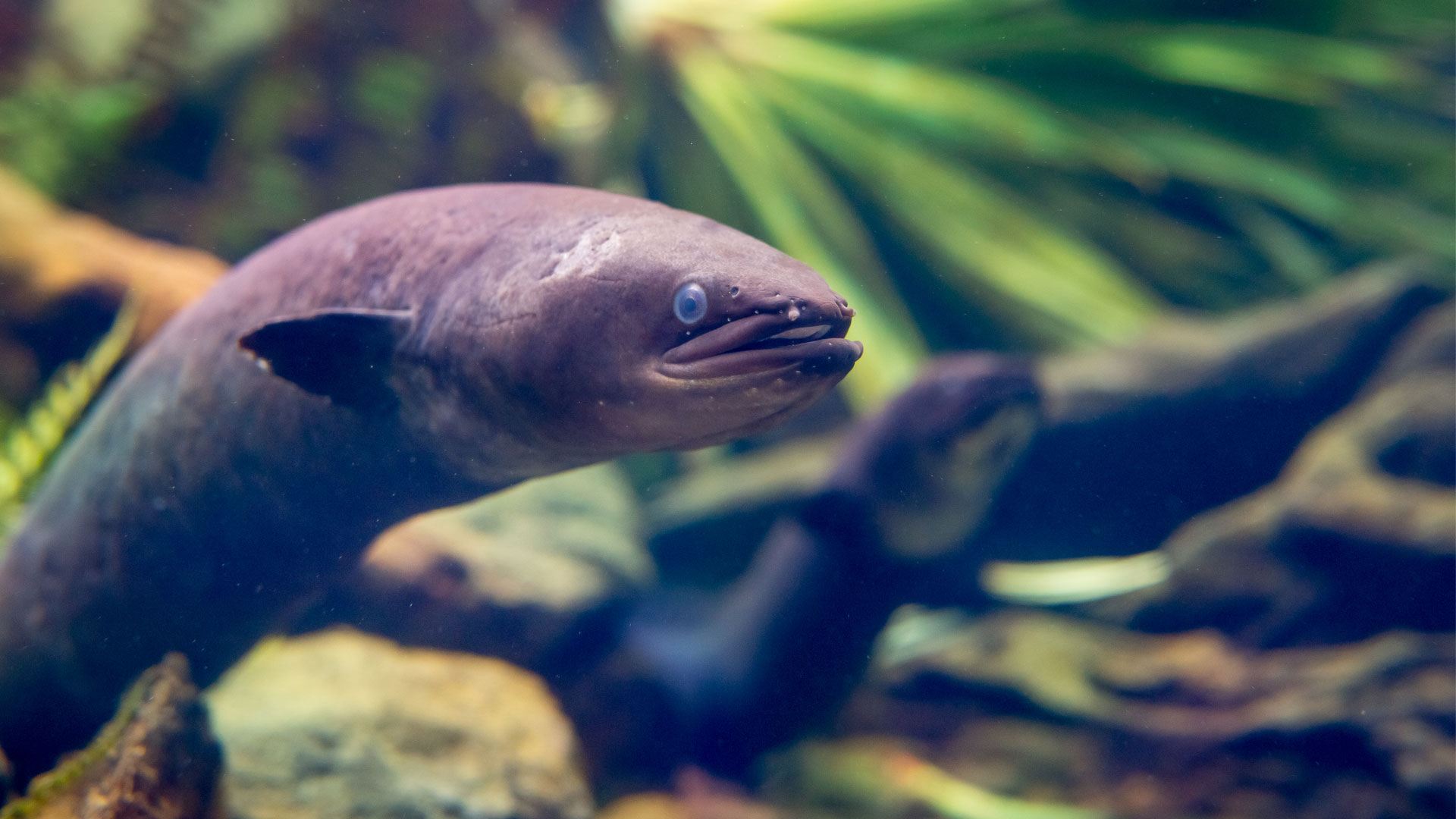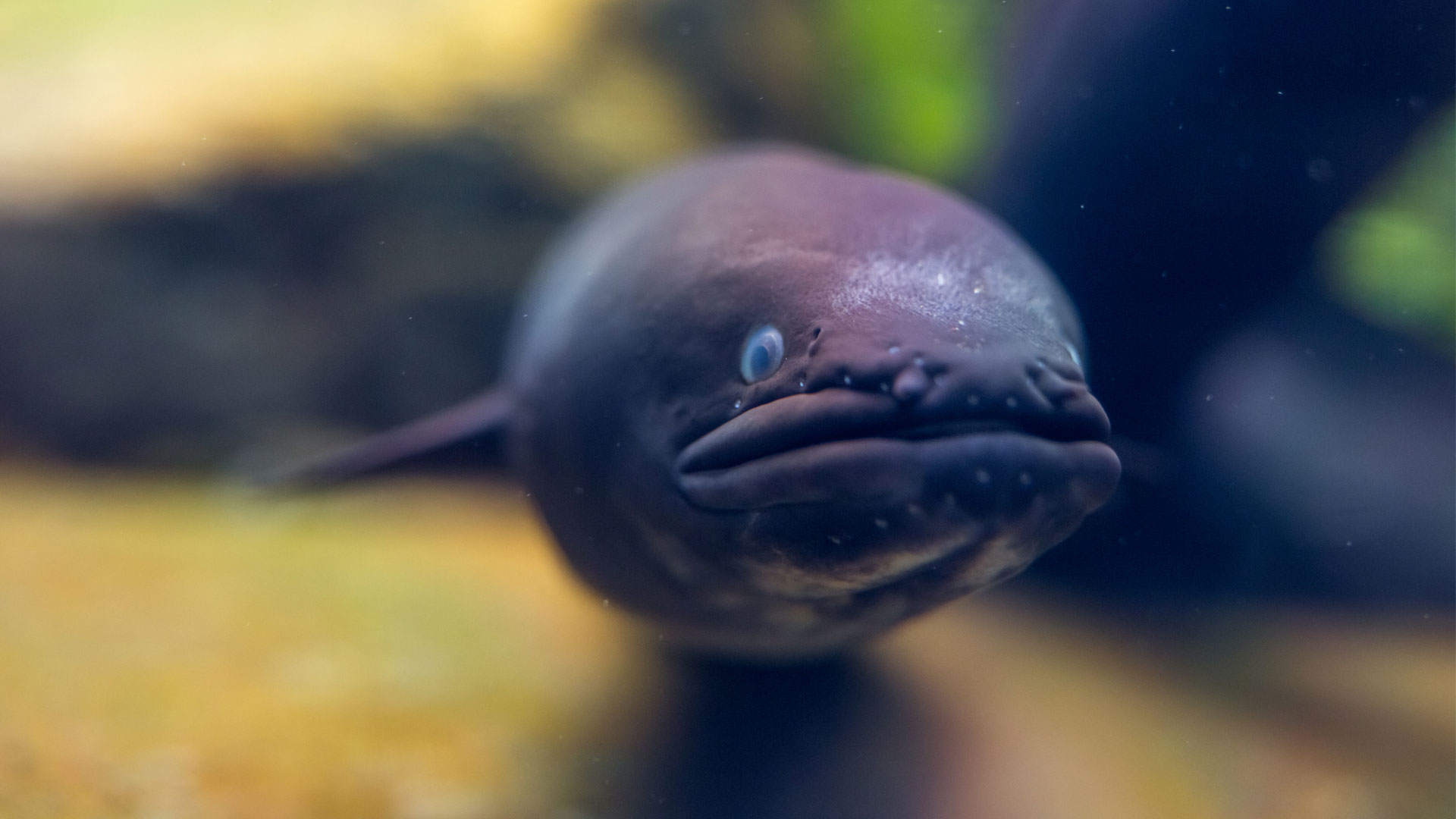The longfin eel, known locally as tuna, is one of the largest eels in the world. They are a truly remarkable fish, able to travel overland for up to 2 days by breathing through their skin.
During the day, eels are secretive, hiding under logs and boulders or under riverbanks. They hunt mostly at night, using their excellent sense of smell. Their protruding tube-like nostrils help them to get a good scent of what’s ahead. Juvenile longfin eels feed on insect larvae, worms, and water snails. As they get bigger, they begin to feed on fish. They will also eat fresh-water crayfish and even small birds like ducklings.
Over-fishing, pollution, and habitat loss are having a big impact on the size and numbers of eels in our river systems. Longfin eels are now considered at risk, and their numbers are still declining.
Longfin eels live for a very long time and have a unique life cycle. They live in rivers, lakes, and wetlands for most of their lives. Then, after 25-80 years, they travel 5000km to the South Pacific near Tonga to breed. After laying their eggs, they die. The tiny fertilised eggs float on ocean currents for about 15 months until they reach New Zealand. They then journey inland, swimming up rivers, over waterfalls, and even crawling over dams! They transform into glass eels and then elvers before becoming adults.


